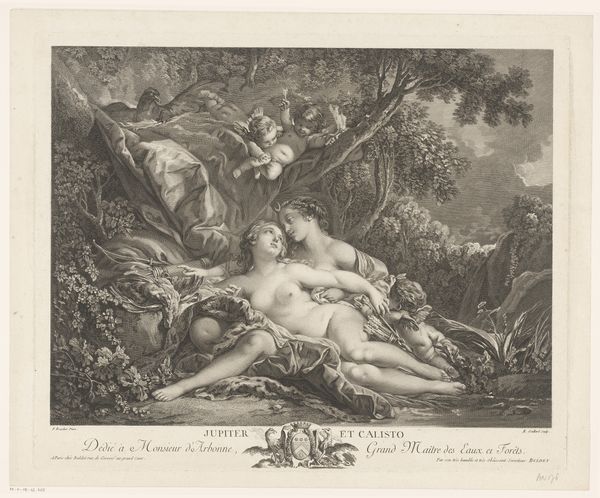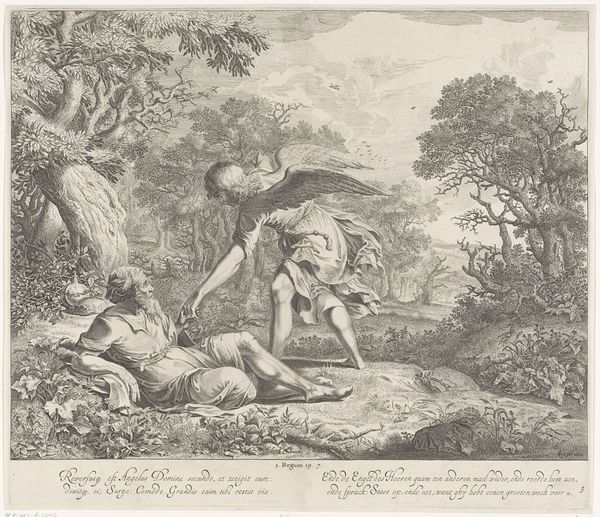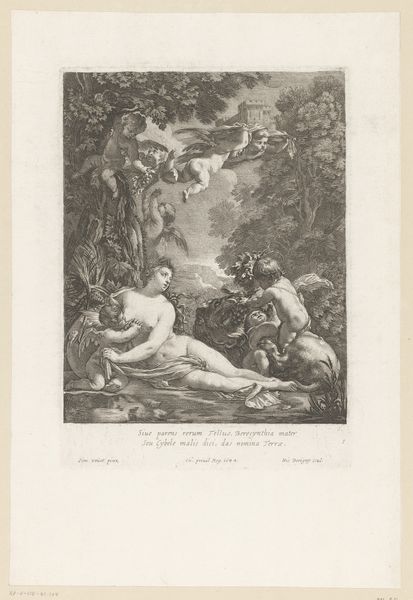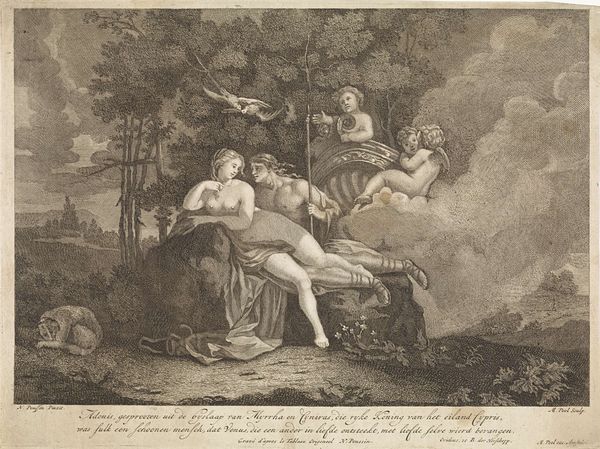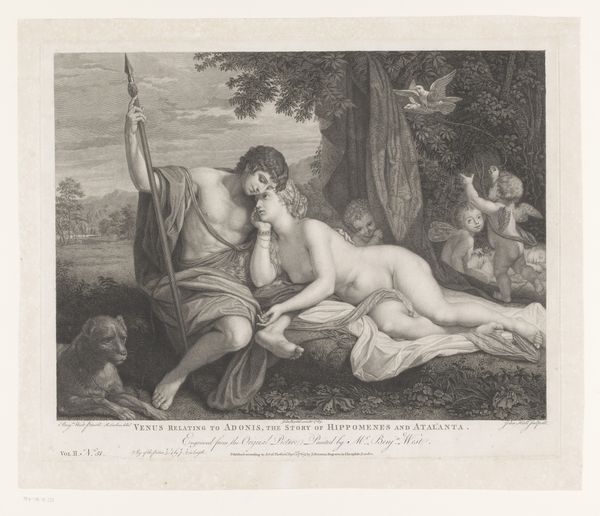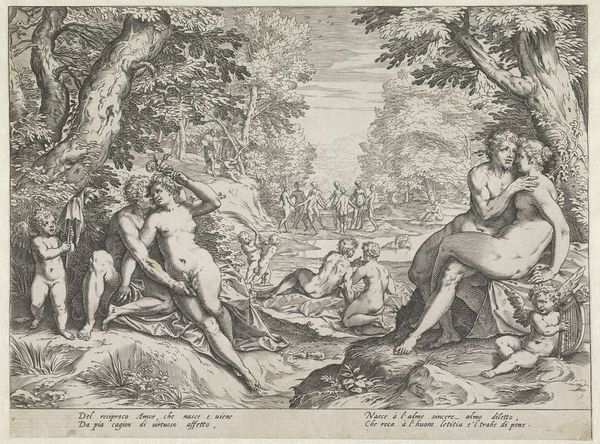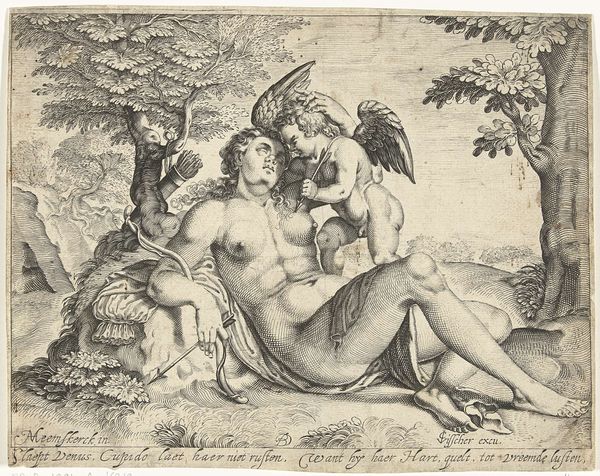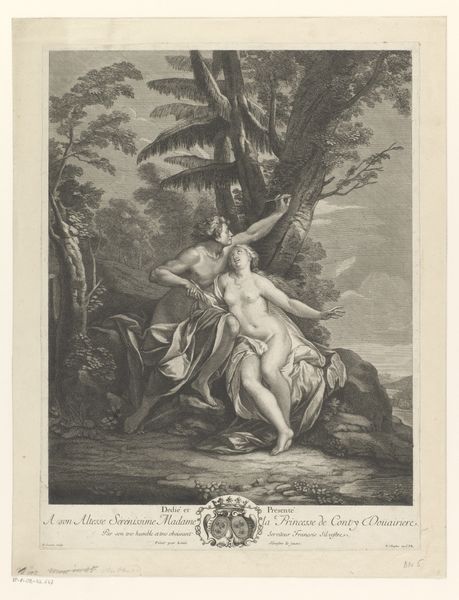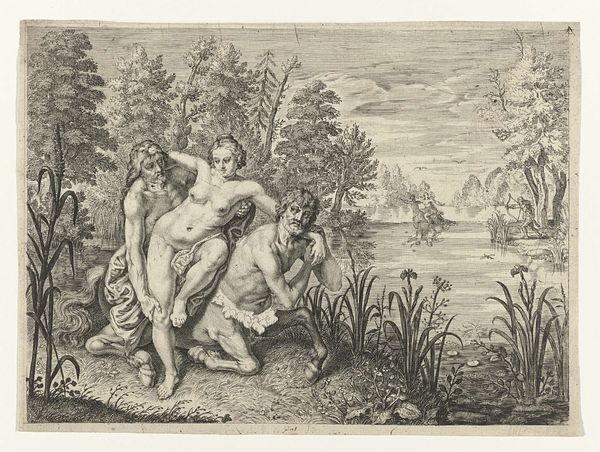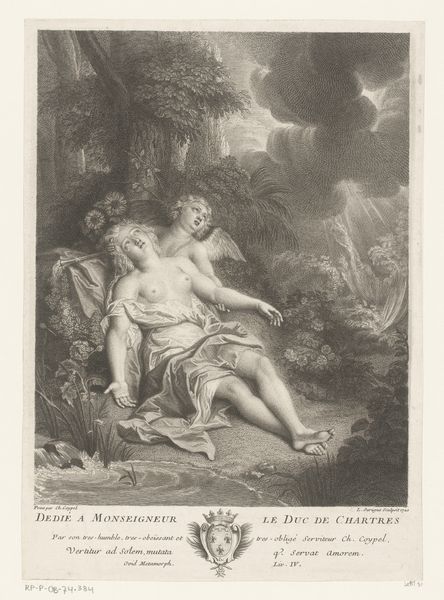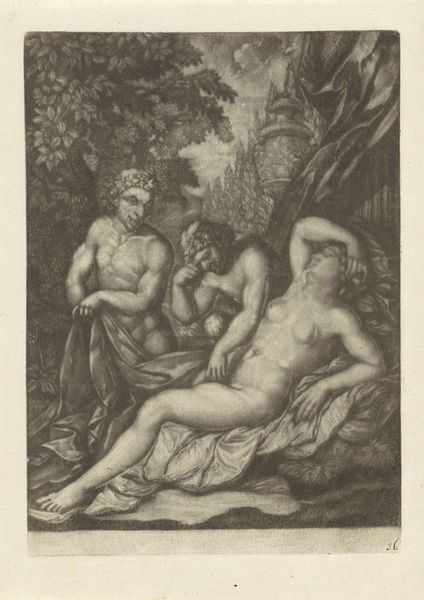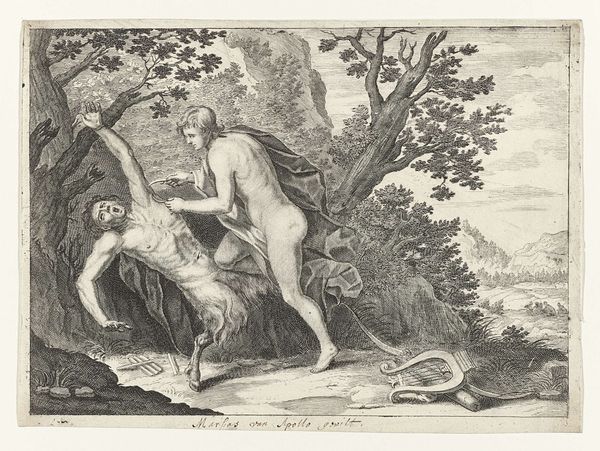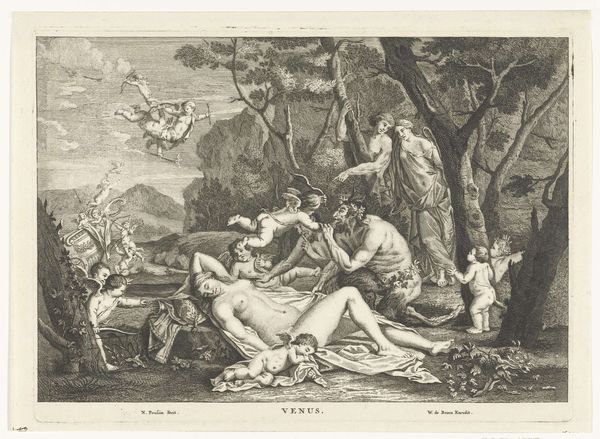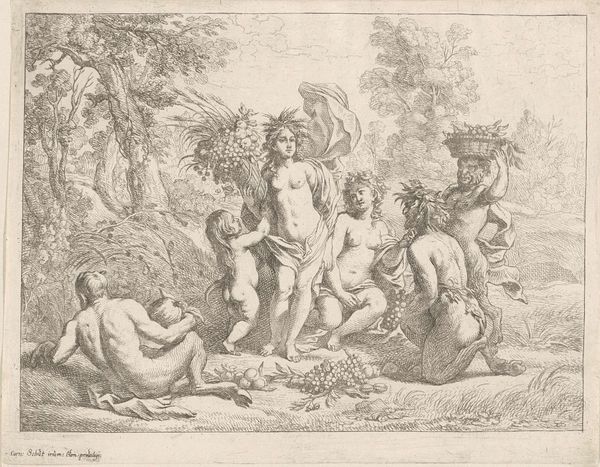
engraving
allegory
baroque
old engraving style
landscape
figuration
line
history-painting
nude
engraving
Dimensions: height 135 mm, width 145 mm
Copyright: Rijks Museum: Open Domain
Bernard Picart etched this depiction of Bacchus and Erigone around 1708. We see Bacchus as a cluster of grapes deceiving Erigone, daughter of Icarius, who reclines beneath a grape vine. The grape vine, a symbol of vitality and ecstasy, has roots stretching back to ancient Dionysian rituals. Across cultures, the grape symbolizes not just intoxication, but transformation and liberation. Consider how, in Christianity, wine—born of grapes—becomes the blood of Christ, a potent symbol of sacrifice and rebirth. Here, Picart evokes this rich history, tapping into a collective memory of intoxication and transformation. This image stirs something primal within us, a reminder of our own potential for both pleasure and delusion. The motif has resurfaced, evolved, and taken on new meanings in different historical contexts, shifting in meaning. This non-linear, cyclical progression powerfully engages viewers on a deep, subconscious level.
Comments
No comments
Be the first to comment and join the conversation on the ultimate creative platform.
